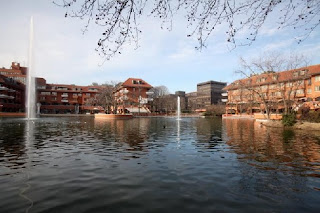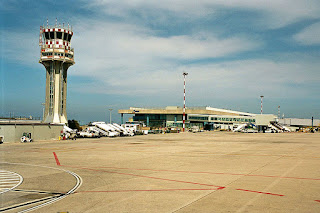Raimondo Vianello - actor and TV host
Big-screen star who conquered television too
Raimondo Vianello, who enjoyed a career that brought success on the big screen and small screen in equal measure, was born on this day in 1922 in Rome. Vianello first rose to fame in the 1950s through a satirical TV show in which he starred with the great commedia all’Italiana actor Ugo Tognazzi, which was eventually banned. From television he moved into movies, appearing in no fewer than 79 films in the space of just 21 years, between 1947 and 1968, some with Tognazzi, but also alongside other stars such as Totò and Virna Lisi. Vianello’s ban from television in 1954 followed a sketch he and Tognazzi’s performed on the popular show Un due tre, broadcast by the Italian state network Rai, in which they sent up the Italian president Giovanni Gronchi following an embarrassing accident he suffered while attending an official function at La Scala opera house in Milan. But Vianello was able to rebuild his career on commercial television, hosting many programmes alongside his wife, the actress Sandra Mondaini. Read more…
___________________________________________________________________
Marco Galiazzo - Olympic champion
First to win gold medal for Italy in archery
Marco Galiazzo, the first Italian to win an Olympic gold medal in archery, was born on this day in 1983 in Ponte San Nicolò, just outside Padua. He won the men’s individual competition at the 2004 Games in Athens at the age of 21, defeating Great Britain’s Larry Godfrey 110-108 in the semi-finals before winning the gold medal match 111-109 against 42-year-old Hiroshi Yamamoto, of Japan. Galiazzo was only one when the veteran Yamamoto competed at the 1984 Olympics in Los Angeles. Galiazzo was one of 10 Italian gold medal winners at the 2004 Olympics, in which Paolo Bettini won the men’s road race in the cycling competition and Stefano Baldini the men’s marathon. Eight years later, at the London Games of 2012, Galiazzo won his second Olympic gold as part of the Italian team that defeated United States in the final of the team event. Read more…
_________________________________________________________________
Domenico Bartolucci – composer
Talented musician served under six popes
Cardinal Domenico Bartolucci, director of the Sistine Chapel Choir for 40 years and a talented and prolific composer, was born on this day in 1917 in Borgo San Lorenzo in Tuscany. Bartolucci was considered one of the most authoritative interpreters of the works of composer Giovanni Pierluigi da Palestrina and he led the Sistine Chapel Choir in performances all over the world. His own compositions are said to fill more than 40 volumes and include masses, hymns, madrigals, orchestral music and an opera. Bartolucci was born in Borgo San Lorenzo near Florence, the son of a brick factory worker who loved the music of Verdi and Donizetti. He became director of music for the Chapel of the Duomo of Florence and began to compose masses, motets and organ music. Bartolucci went to Rome, where in 1952 was appointed deputy master of the Sistine Chapel Choir, becoming director four years later. Read more…
___________________________________________________________________
Andrea Lo Cicero - rugby star turned TV presenter
Prop nicknamed "il Barone" now bona fide Knight
Former Italian international rugby star Andrea Lo Cicero was born on this day in 1976 in Catania, Sicily. The 113 kilo (249lb) prop forward played rugby for the Azzurri between 2000 and 2013, retiring with 103 caps. At the time it was the highest number won by any player and Lo Cicero was only the second player in the history of the national team to win more than 100 caps. He made his debut against England at the Stadio Flaminio in Rome in March 2000, as the Five Nations Championship became the Six Nations with the inclusion of Italy for the first time, and ended his international career in the capital, although this time at the Stadio Olimpico, in a 22-15 victory over Ireland in the 2013 Championship. He also played in three rugby World Cups, in Australia in 2003, France in 2007 and New Zealand in 2011. Since retiring from competitive sport, Lo Cicero has established a second career as a TV presenter. He was made a Knight of the Order of Merit of the Republic in January 2015. Read more...
Home


























